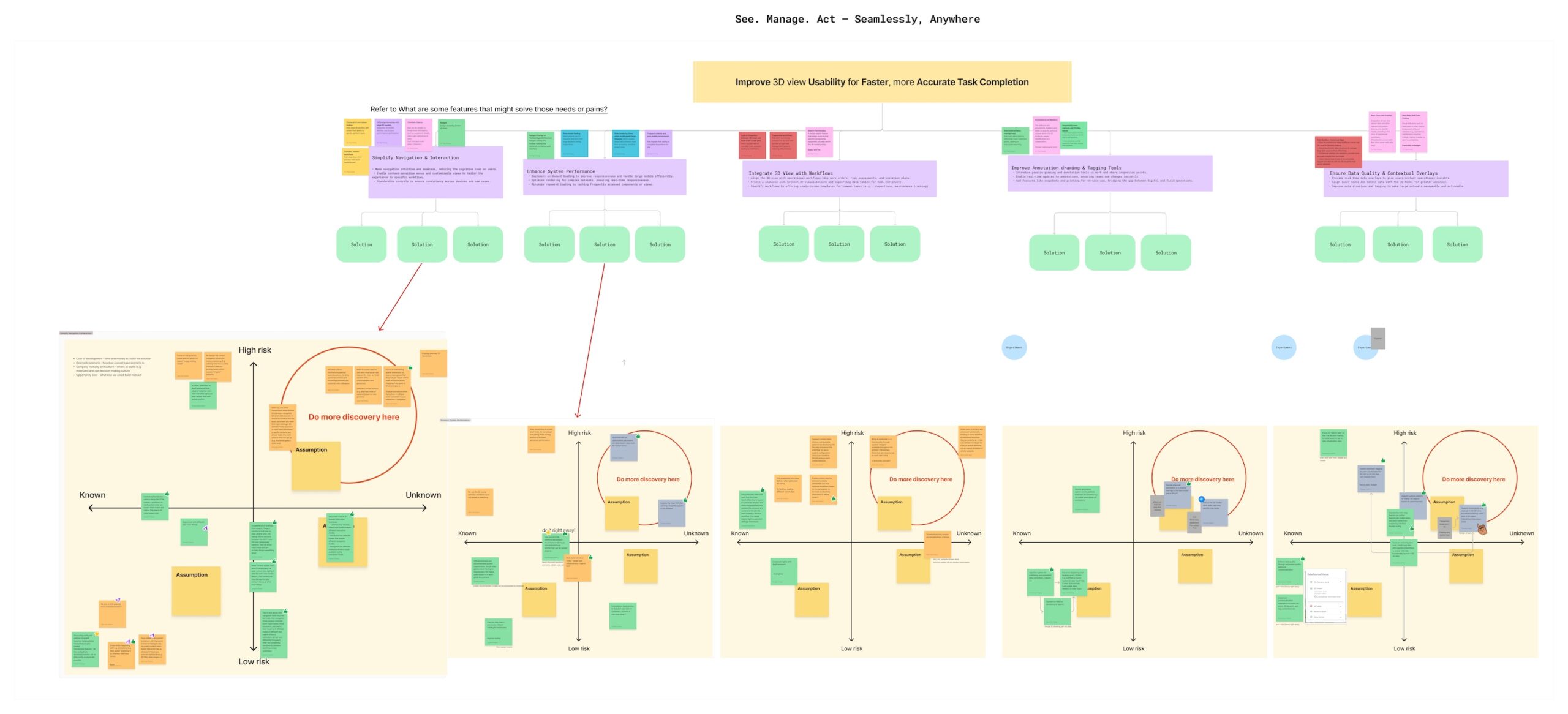The Challenge
After our 3D Visualization team went through a reorganization, we found ourselves with overlapping initiatives, limited capacity, and growing uncertainty about what truly mattered. Each group had its own version of “the most important problem,” and priorities were shifting week to week.
As a UX Lead, I could sense the frustration — talented people were working hard, but not necessarily in the same direction. I needed a way to help the team reconnect around our shared vision and make smarter, outcome-driven decisions together.
That’s when I turned to Teresa Torres’s Opportunity Solution Tree (OST) — a visual framework designed to help teams move from broad problem statements to focused priorities and measurable outcomes.
By mapping user pains, opportunities, and potential experiments in one shared space, we built not just alignment, but clarity — a collective understanding of why we’re building, not just what we’re building.
- Lack of a shared vision across UX, product, and engineering after re-org
- Too many “good ideas” competing for limited resources
- Unclear link between UX improvements and measurable business outcomes
- Pressure to deliver under reduced capacity
Sharing the Vision — My Dev Night Talk
During this period, I had the opportunity to share our journey with colleagues across KDI at Developer Night. The goal wasn’t just to showcase a UX method, but to remind everyone why alignment matters.
I opened by saying:
“We often think we’re building features, but we’re really building understanding — between people, systems, and outcomes.”
That evening, I walked the team through how we were using the Opportunity Solution Tree to navigate complexity. Instead of more process slides, I showed how visualizing opportunities helped our 3D Visualization team turn frustration into focus.
We talked about how design can help the business deliver even when resources are tight — by shifting from feature thinking to outcome thinking.
The OST became our tool: every sticky note on that board was not just an idea, but a conversation — about what really moves us toward our shared vision: (See the image below)
“See. Manage. Act — Seamlessly, Anywhere.”
What stood out most wasn’t the framework itself, but the shared realization in the room — that clarity is something we all build together.
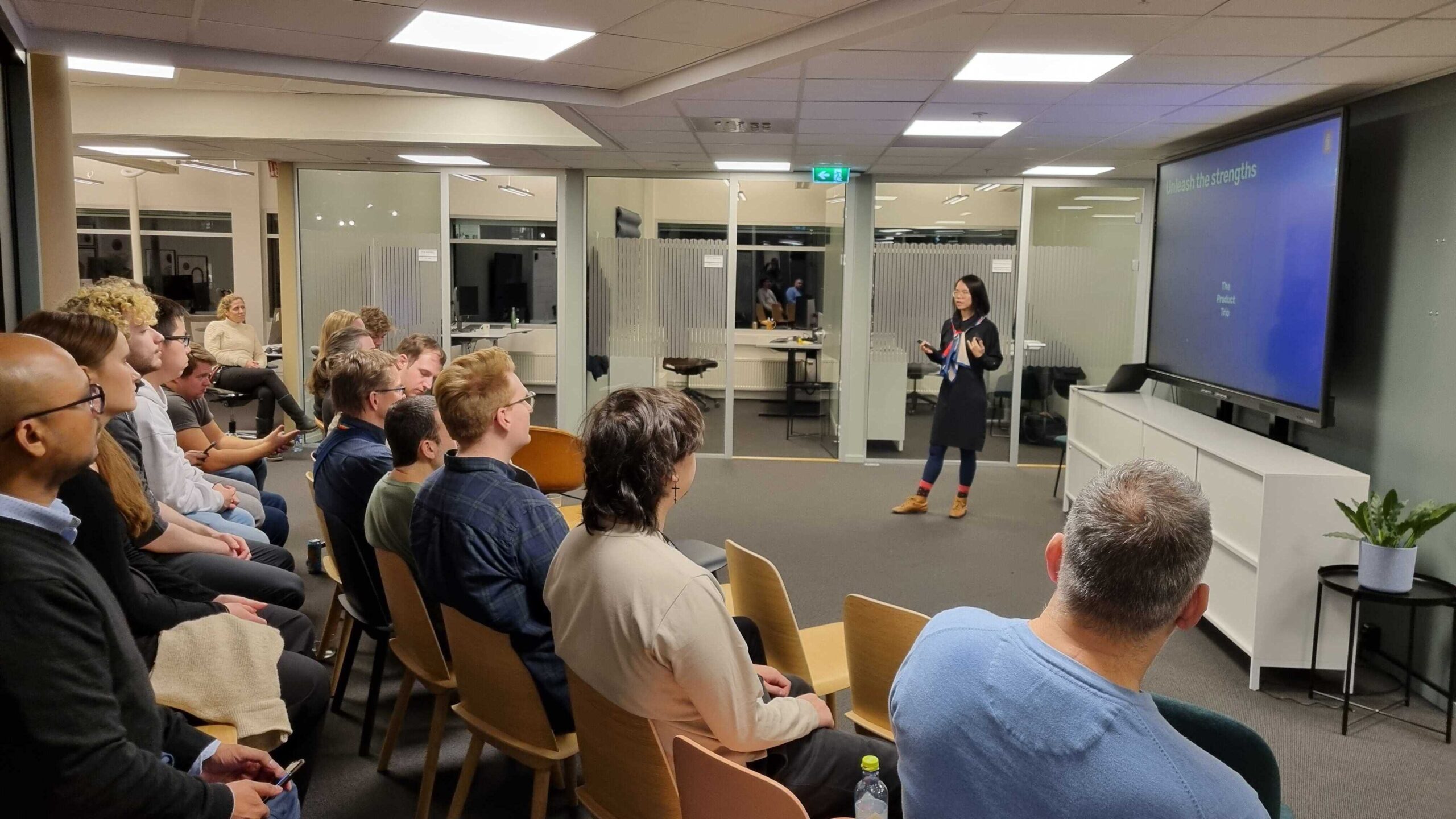
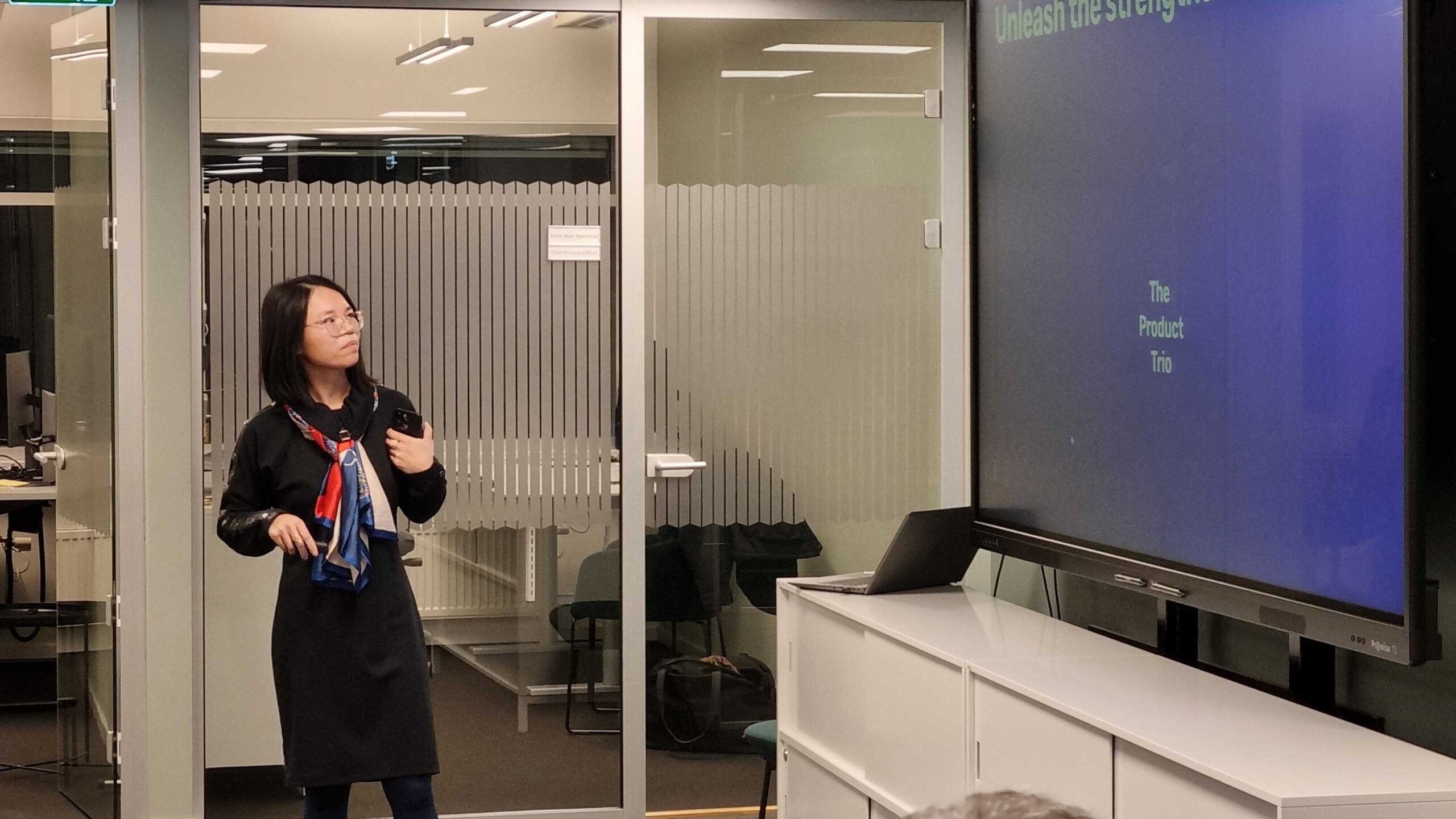
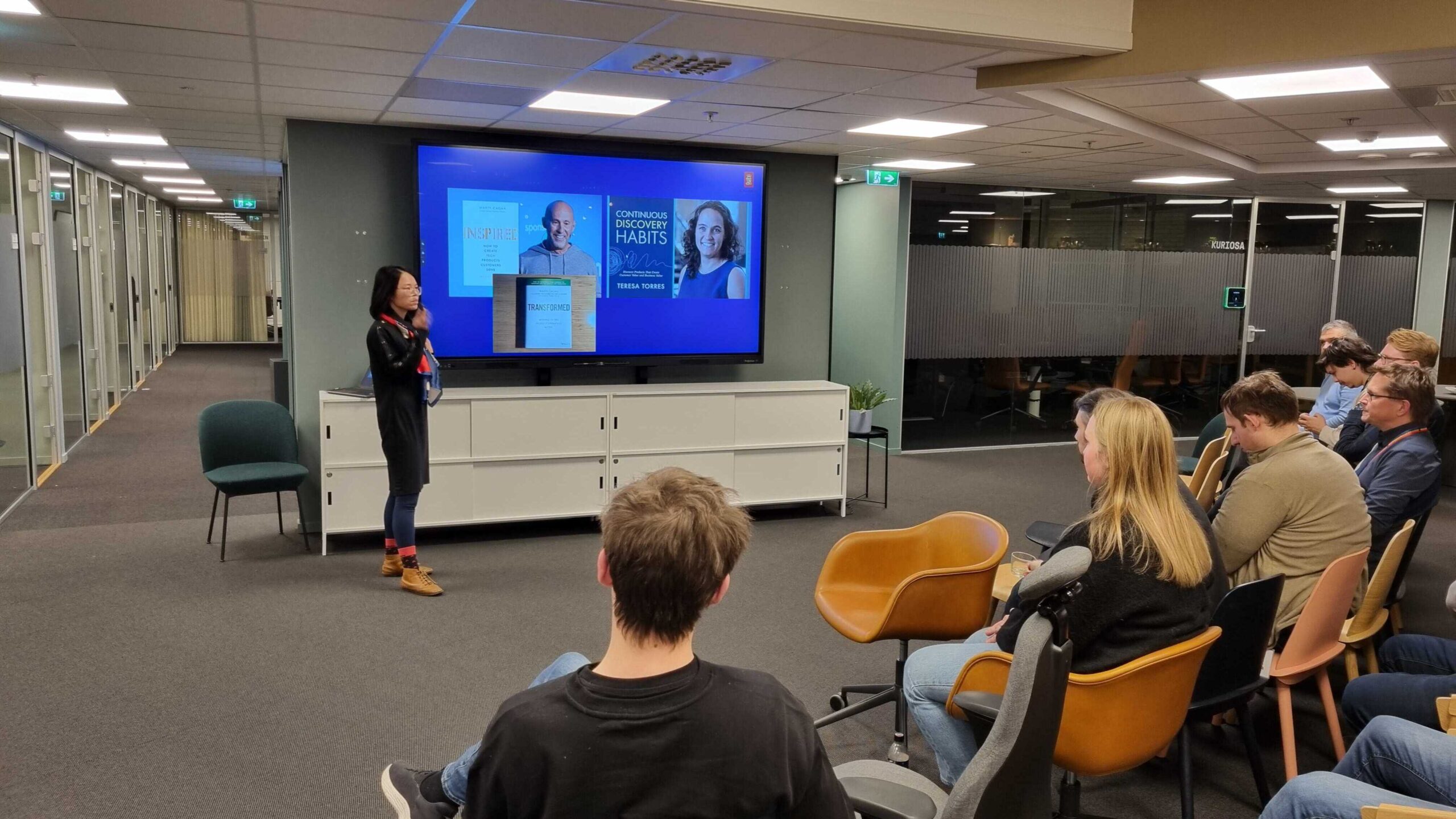
Applying the OST Framework
I adapted the OST framework for our 3D View product — an enterprise digital twin visualization tool — to help the team identify what truly mattered to users and the business.
We started by defining a clear UX outcome:
“Improve Twin View usability for faster, more accurate task completion.”
From there, we mapped user frustrations (opportunities), potential design directions (solutions), and validation steps (experiments). Below are two examples of how we prioritized opportunities after discussing potential solutions with stakeholders.
We used a Value–Risk Matrix to evaluate each idea — mapping initiatives by high value / low risk and high value / high risk. Every item went through multiple rounds of discussion, review, and iteration to ensure we were balancing innovation with feasibility. The Opportunity Solution Tree became a living document — evolving as our understanding deepened. We pivoted when new insights emerged, and that flexibility helped us keep alignment even as priorities shifted. Instead of chasing fixed plans, the team learned to focus on learning fast and delivering value continuously.
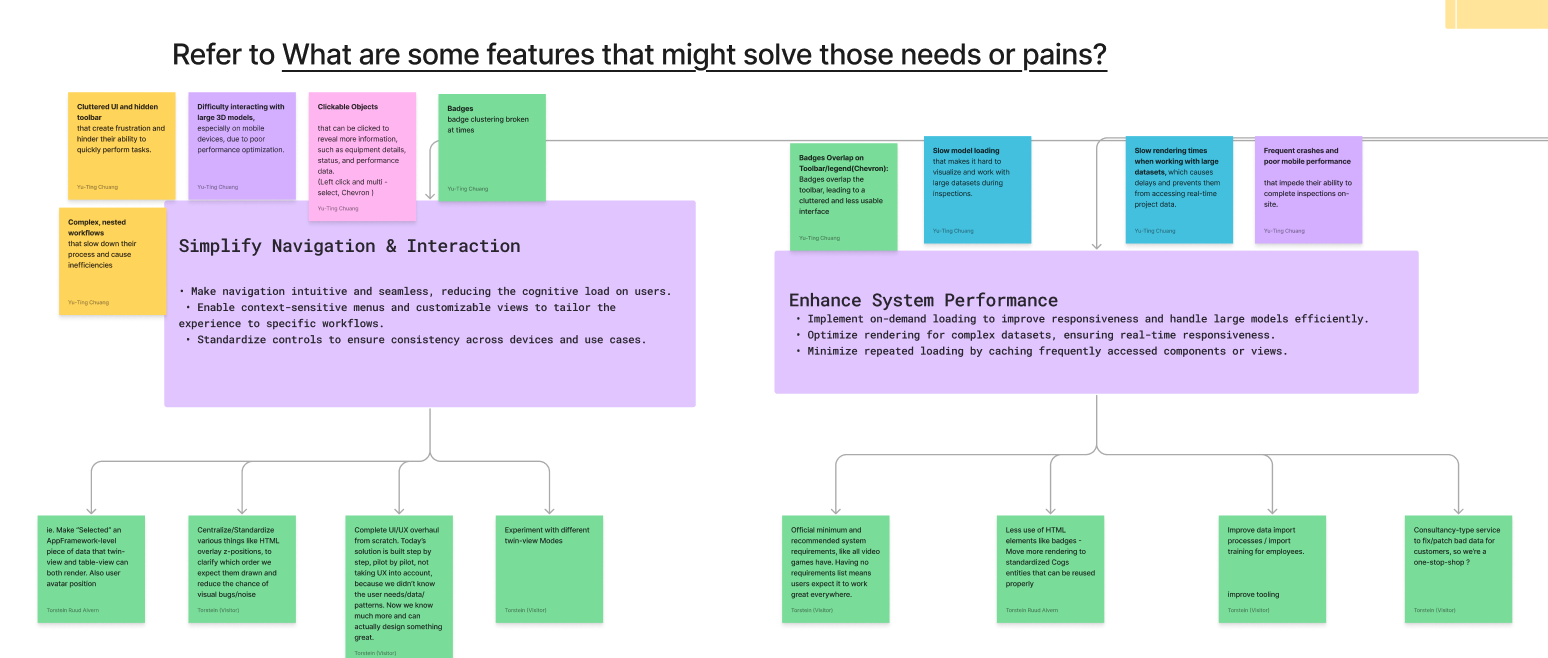
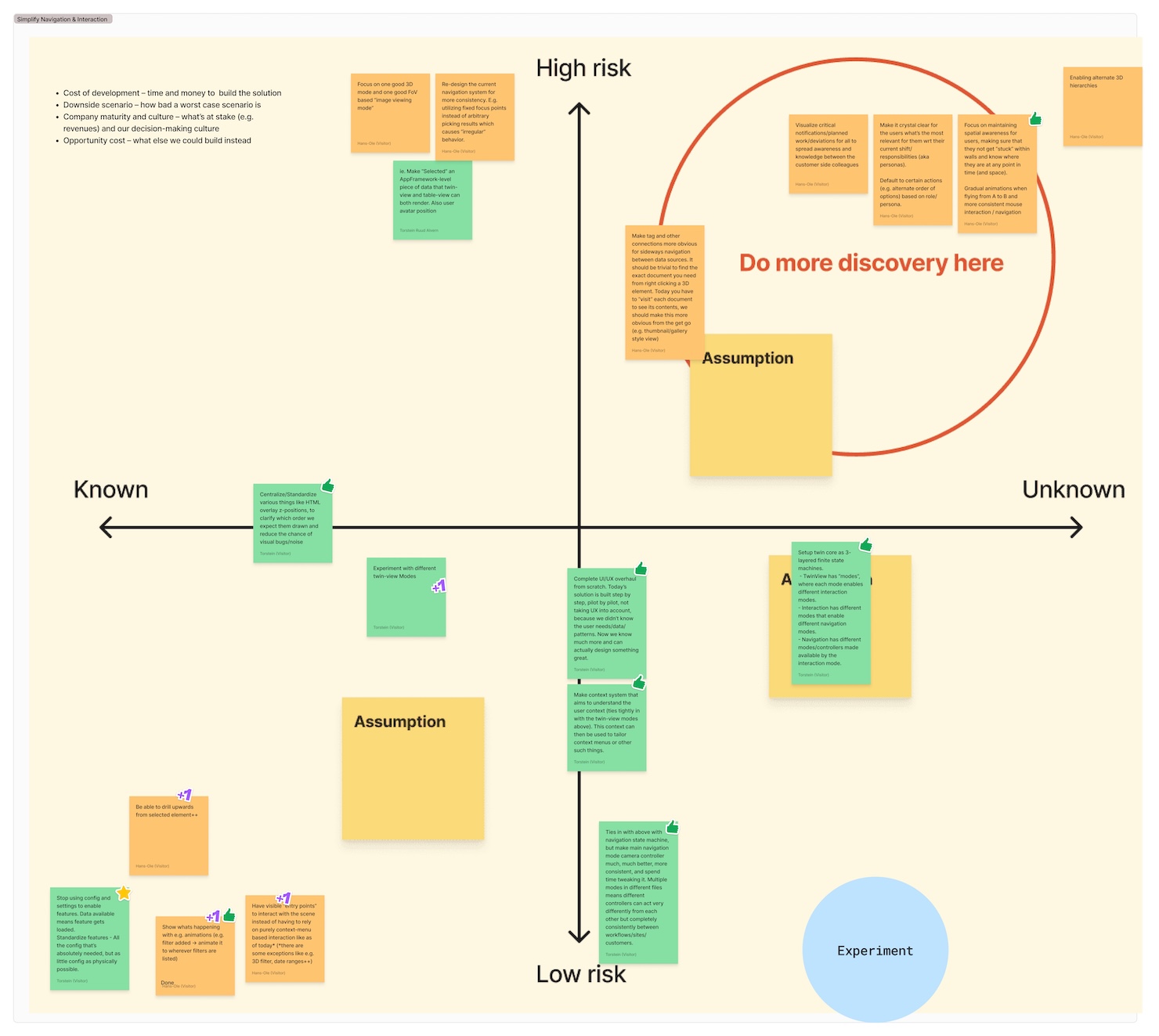
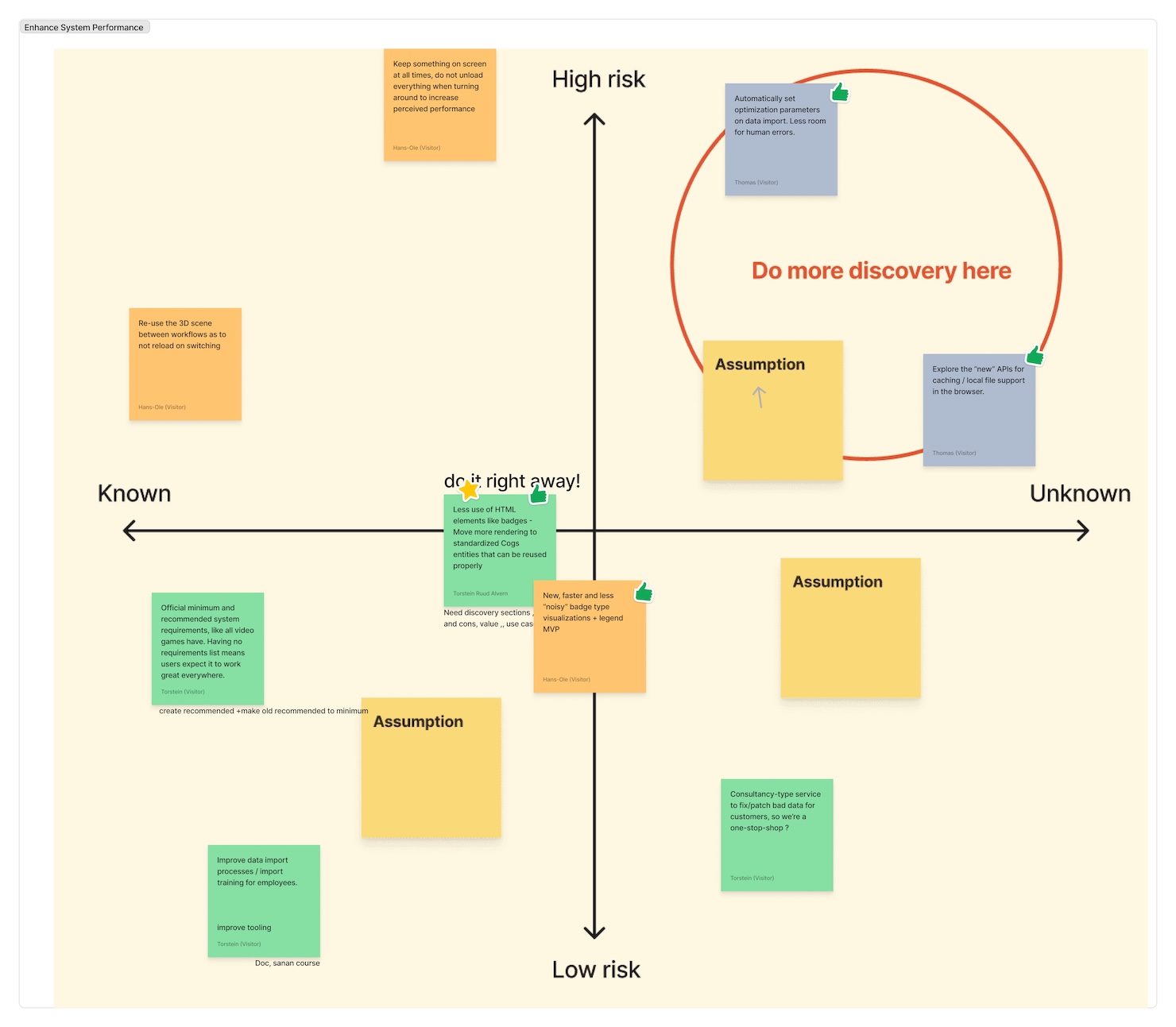
The Process
Each session included product managers, UX designers, Tech Lead, developer, and Vis director. We gathered findings from user feedback, support tickets, and internal testing to create our first draft tree in FigJam. By collaboratively clustering problems and opportunities, the team gained a shared understanding of where design could have the highest impact.
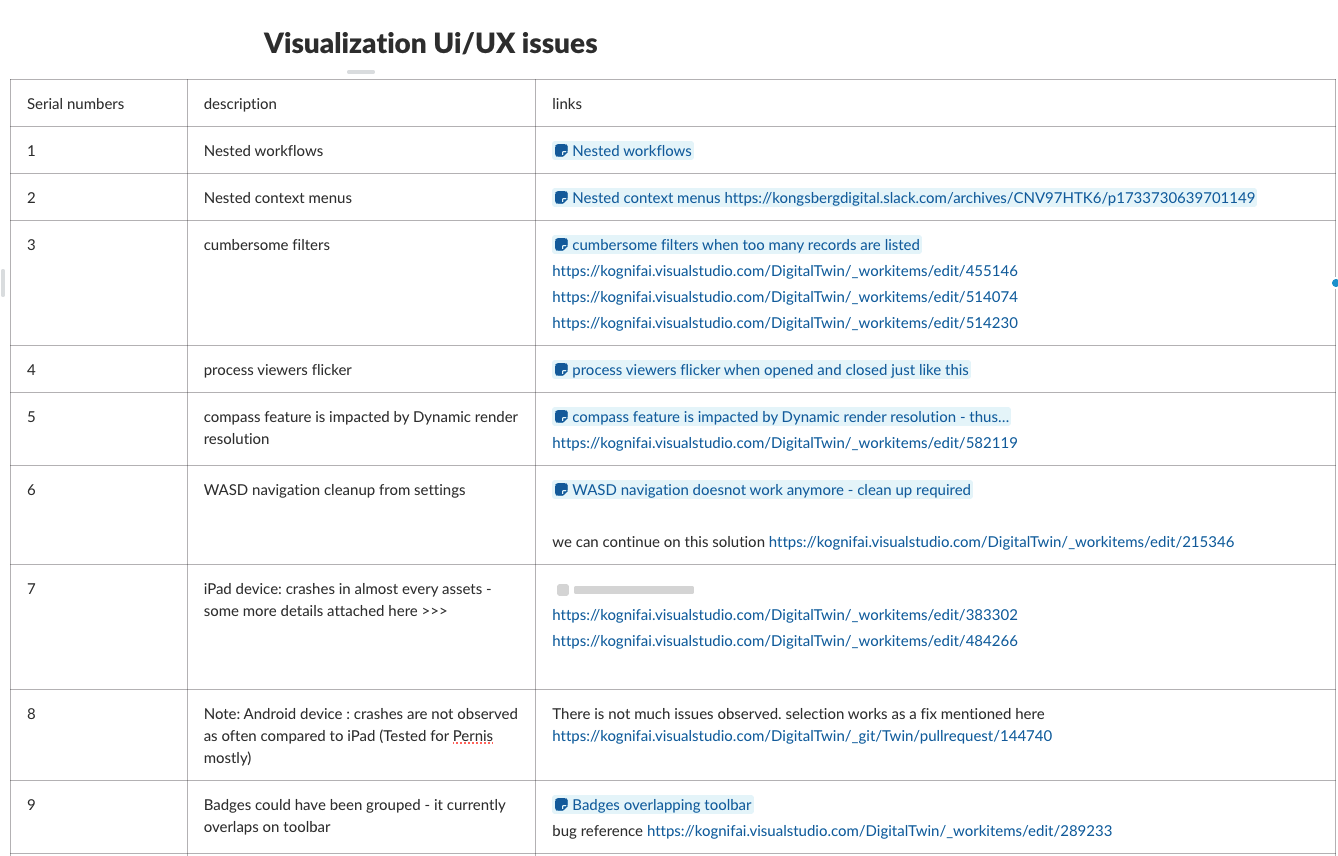
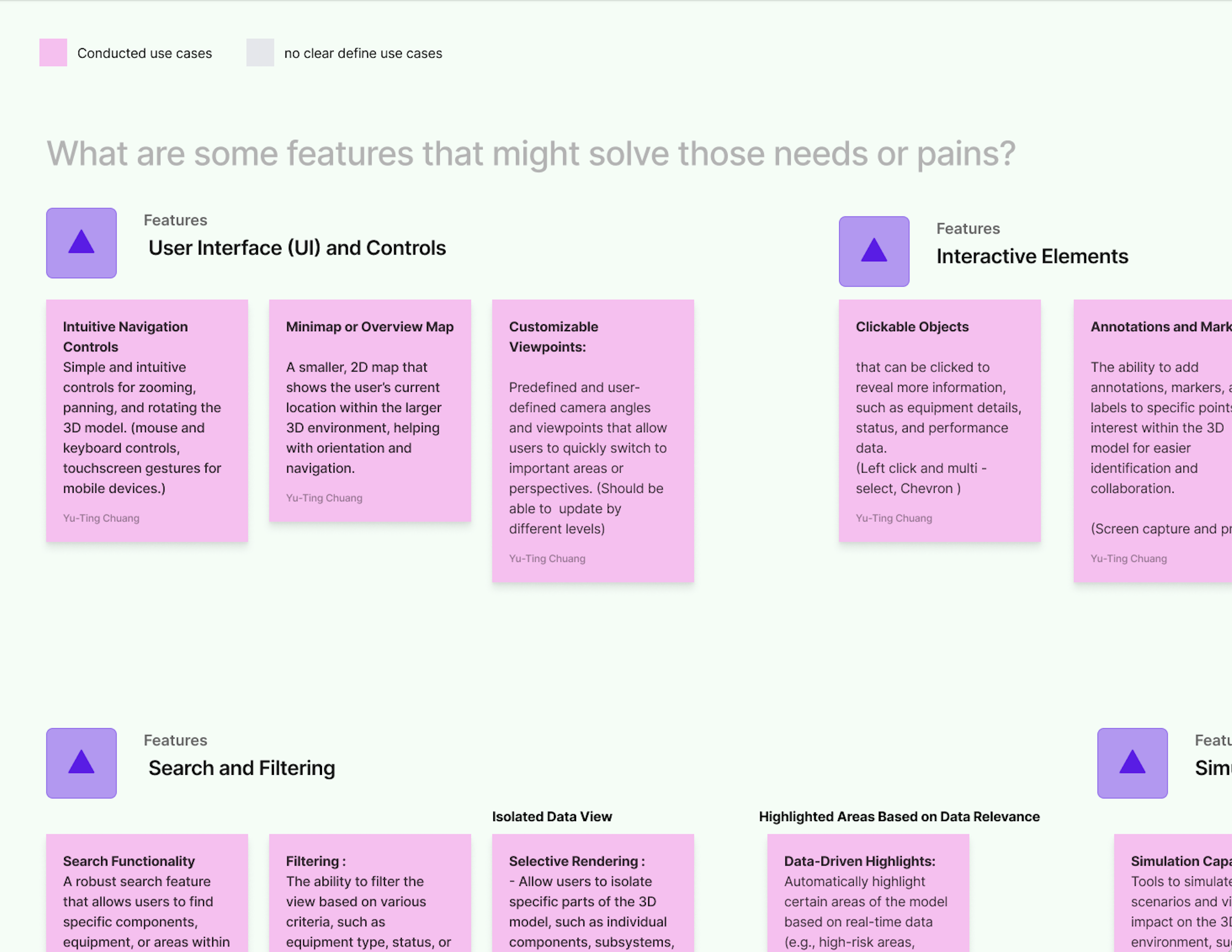
For example:
Users struggled to find assets in large 3D scenes → Opportunity: Improve search and annotation tools
UI clutter reduced task confidence → Opportunity: Refine visual hierarchy and standardize controls
Outcome
The Opportunity Solution Tree quickly became our decision-making anchor. It turned ambiguous discussions into concrete trade-offs.
- Prioritization improved — everyone could see which solutions tied directly to our UX outcomes.
- Cross-functional alignment strengthened — engineers, designers, and product leads shared the same visual roadmap.
- The team regained focus — moving from firefighting to intentional design iterations.
Before
How we use DevOps to prioritize incoming tasks
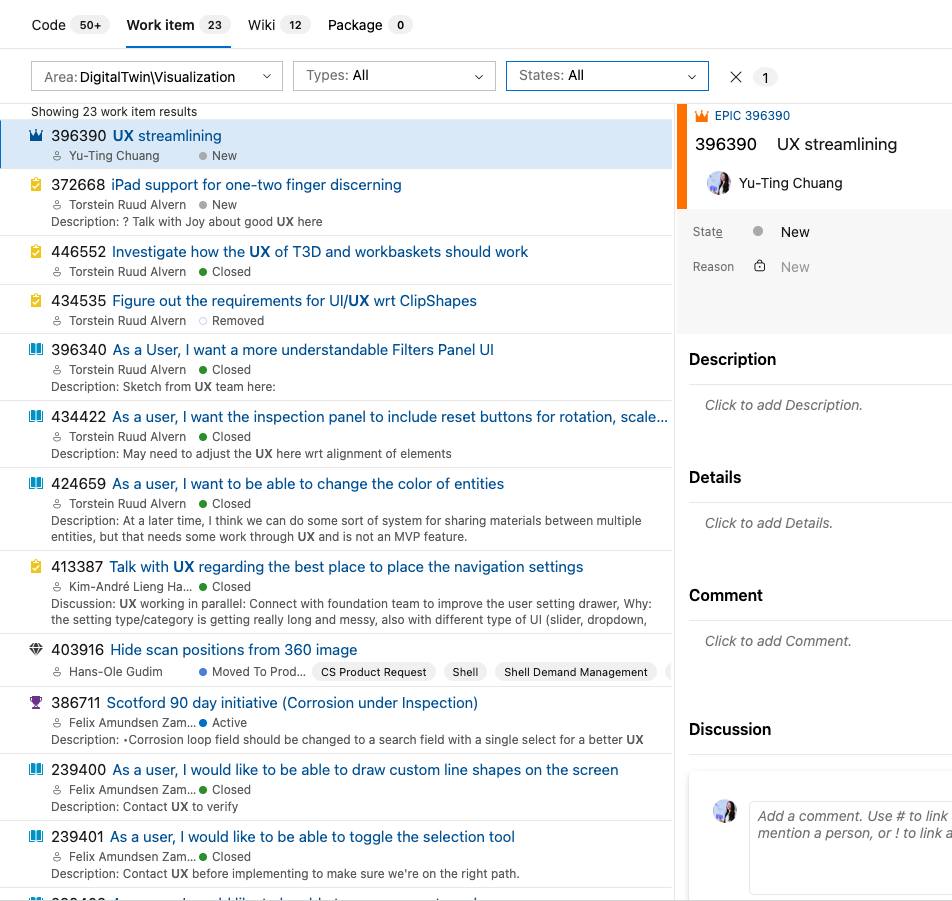
After
How we use OST to prioritize
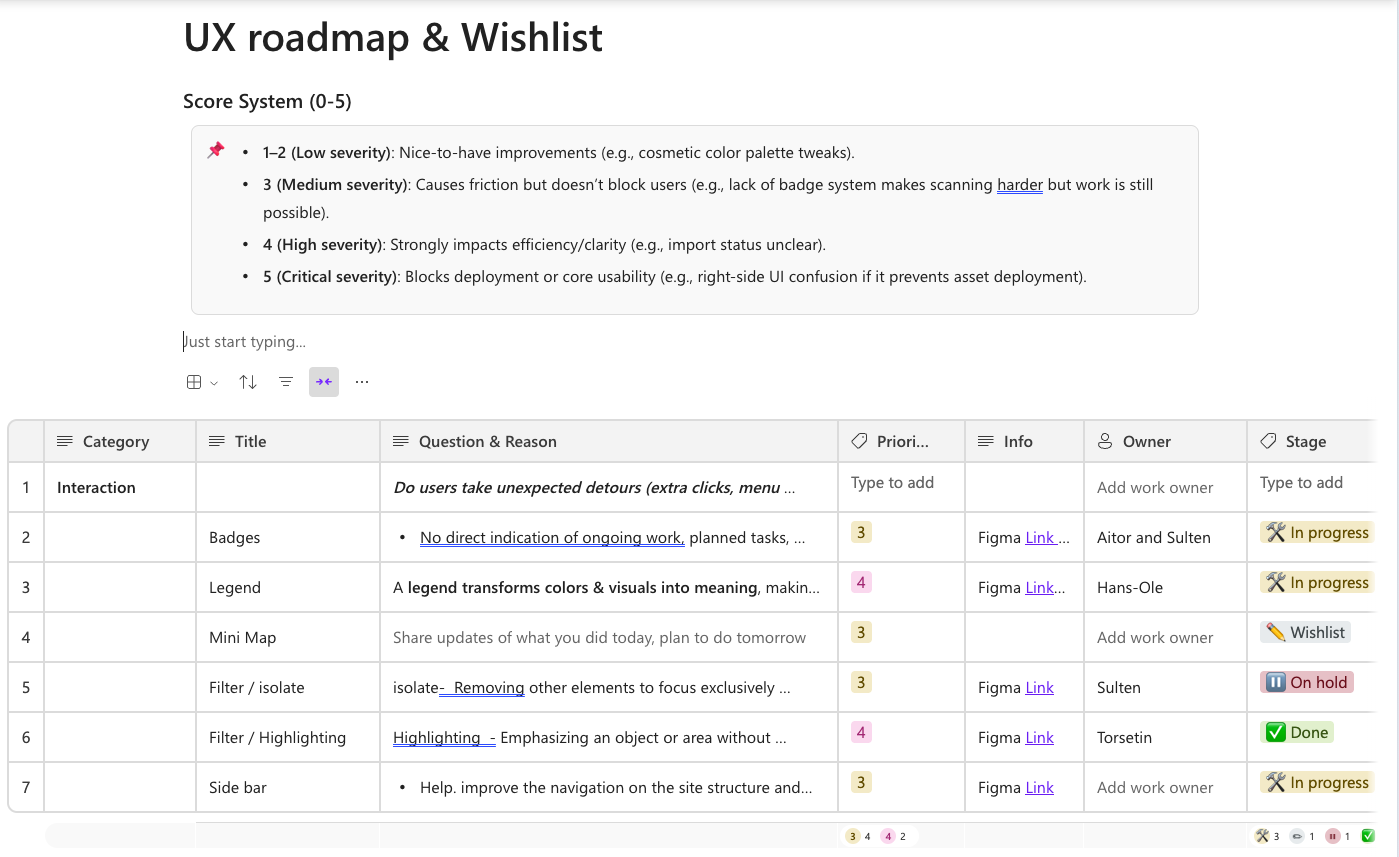
We take the low-risk, well-known post it, tune it to be a DevOps Story/Feature, depending on how big the topics are.
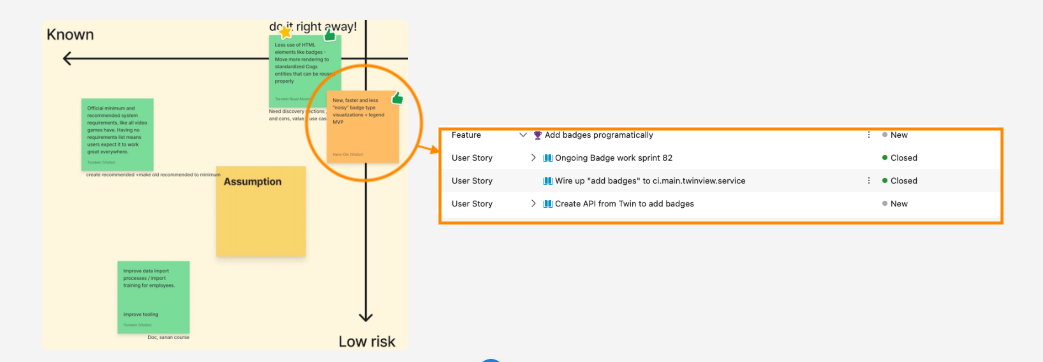
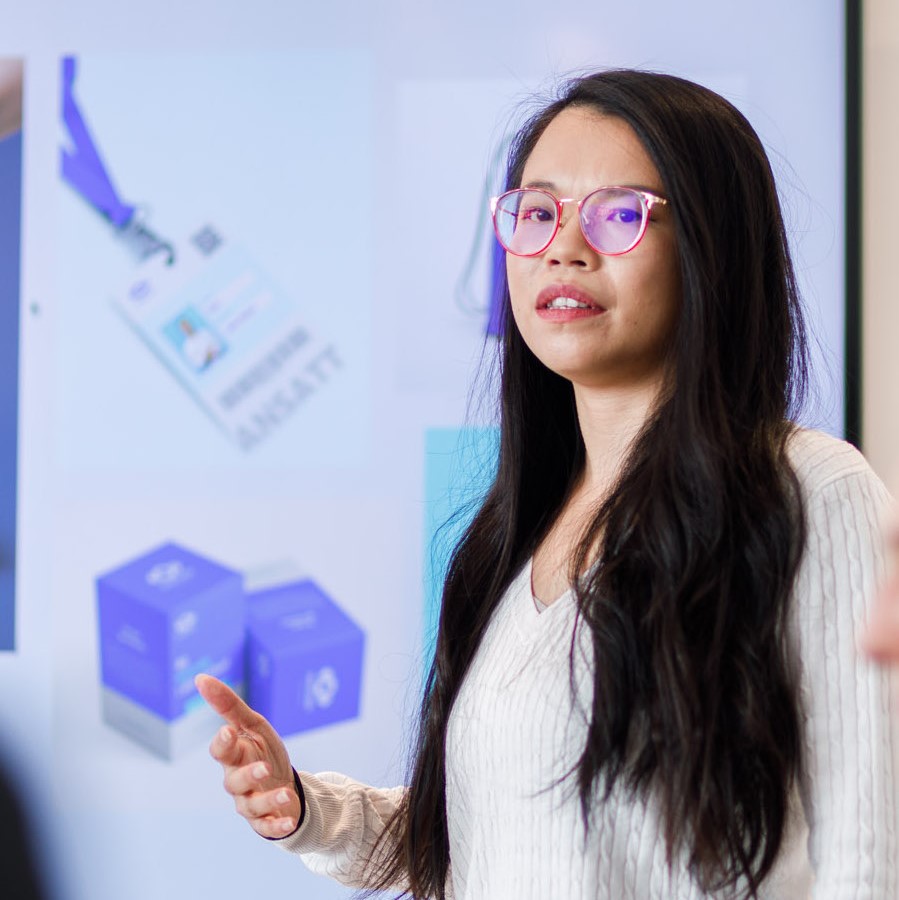
Reflection
The OST helped us shift from problem-driven to outcome-driven thinking. It wasn’t about building more features; it was about ensuring every feature moved us closer to our goal: helping users see, manage, and act seamlessly, anywhere.
When teams can visualize how every design decision supports the larger mission, alignment happens naturally — even after change.
Design leadership means creating clarity before creation.
Building the foundation: twin view system design document (SDD)
Product discovery: what-if scenarios for smarter decisions in digital twin
Designing for millions: Product Research on Taiwan’s NHI (National Health Insurance)App
(47) 41 33 16 51
Reach Me By Phone
contact@yutingchuang.com
Email Me
Rølivegen 367, Steinkjer, 7718, Trøndelag
📍 Based in Norway

